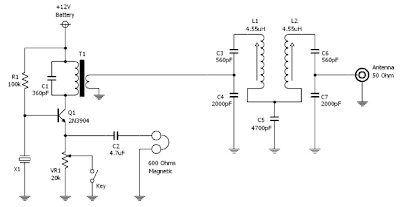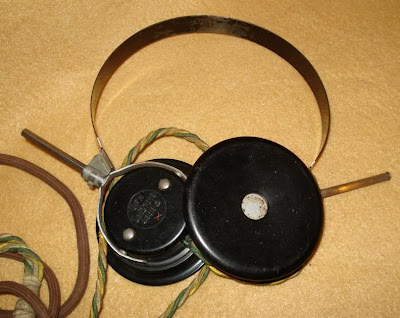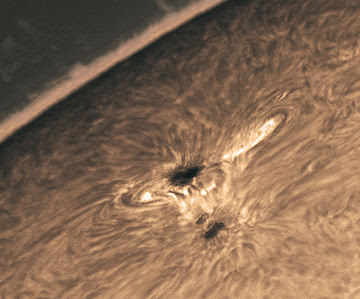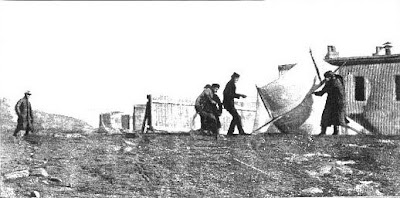 Our worldwide team of Sputnik enthusiasts continues to seek out the elusive schematic diagram of the spacecraft's 20 MHz transmitter. American, Cuban, Russian and German radio amateurs are involved. Recently Bruce, KK0S, visited the Kansas Cosmosphere in an effort to get a look at the innards of Sputnik's "flight spare." The picture above is his -- it shows the Sputnik antenna connection. (More pictures from Kansas here: http://s747.photobucket.com/albums/xx120/trader_vic/Kansas%20Cosmosphere/)
Our worldwide team of Sputnik enthusiasts continues to seek out the elusive schematic diagram of the spacecraft's 20 MHz transmitter. American, Cuban, Russian and German radio amateurs are involved. Recently Bruce, KK0S, visited the Kansas Cosmosphere in an effort to get a look at the innards of Sputnik's "flight spare." The picture above is his -- it shows the Sputnik antenna connection. (More pictures from Kansas here: http://s747.photobucket.com/albums/xx120/trader_vic/Kansas%20Cosmosphere/)There was bad news and good news from the visit: The bad news was that the spacecraft on display was a hollow sphere. The good news is that the internal parts --including the transmitter -- might be in storage someplace, just waiting for our reverse engineering. Stay tuned (to 20 MHz!).
Speaking of which, I have a question: OK so the crafty Soviets picked 20.oo5 MHz for some good reasons: Being so close to the WWV freq, it would be easy for hams and SWLs to find it with precision. In the November/December 2007 issue of "Break In" (from NZ -- thanks Jonathan-san!) ZL3DW notes that this frequency selection would allow a receiver set to exactly 20 MHz to "produce an audio tone plus or minus the Doppler shift without ever going through zero beat." But zero beat with what? Most of the receivers out there would not have had BFOs, right? So the Soviets wouldn't have been using ordinary CW, right? Were they using AM, with the beeps produced by an audio oscillator modulating the carrier?
Here is a update from our Chief Designer, Comrade Mike, AA1TJ:
I currently have a prototype for a simple "Sputniker" transmitter on the bench using a 1sh29b in the oscillator and a 1p24b working as the PA. As in the original, the input DC PA power is 1watt. The crystal-controlled oscillator uses an inexpensive ESS 21.060kHz xtal. So far, all systems are GO.
BTW, here's an example of how inexpensively these lovely little tubes may be purchased. Oleg, RV3GM, and his pals might be able to do even better.
Although there are only so many ways one can build a two-tube, crystal-controlled MOPA transmitter, we'd still very much like to nail down the original transmitter circuitry. Bruce, KK0S and Peter, DL2FI are following up leads to that end.
Once we're a bit further along I'm hoping that someone will step-up to produce a kit. Actually, last evening someone raised their hand to ask if a kit were already available.
Dasvidania,
Mike, AA1TJ













































